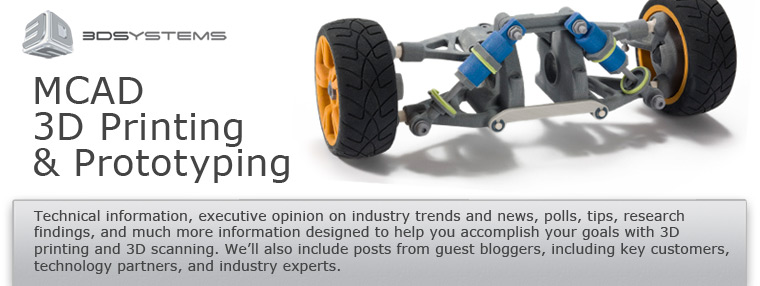Thanks for the great responses to last week's blog posting: Consumer 3D Printing? I agree with many of the comments. One in particular I agree with is that open source FDM 3D printers are not for the average consumer.
Open source goes a long way toward lowering cost, increasing awareness, and advancing 3D printing technologies. These are all important in order for 3D printing to become a consumer activity.
In my opinion though, in order to break through to this market it must also be fast, have simplicity and elegance. I think of the average person coming home from work (not a technical person) and finding that broken knob on the stove. What would it take for 3D printing to be the preferred method of replacing the knob?
At the very least it would have to be as easy as going to the manufacturers website, picking out the replacement knob, placing an order with a credit card and waiting a few days for the “original” knob to arrive in the mail. 10 to 15 minutes of time online, 2 days waiting, and no technical experience necessary. Open source – and all commercial 3D printers have a ways to go before they can compete with that.
One of the reasons it is difficult to imagine consumer 3D printing is that most everything in the home, office, or car has been mass-produced. That means a tool most likely exists that can turn out replacement parts by the thousands at a very low cost. 3D printing is ideally suited for printing “snowflakes”. The theory is that no two snowflakes are the same. So, if you wanted to produce just a single piece of a one of a kind object would you produce a steel tool and injection mold it?
This is the sweet spot for 3D printing and why it is used for concept models, early stage design verification, architecture, art, low volume prototype parts, etc… Yes, consumers would most likely use a 3D printer to make one or two of any particular part but that part most likely already exists somewhere by the thousands or even millions.





I feel that it is a great time to live now because I think that we are undergoing a manufacturing revolution. By that meaning just what you wrote above regarding open source 3D printers making technology, and most of all prices, more available to a wider market segment. Once the technology has evolved to embrace the end-user, imagination, greed and inventiveness will drive it to new applications.
ReplyDeleteMaybe in the future we will see the forthcoming decade as the introduction of 3D printing for the masses (in some way) as the last 10 to 15 years made 2D laser and inkjet printing possible for home use.
The technology that I believe has the greatest potential would be the powder-based one such as the ZPrinter's. The reason for that is that it is odourless, does not require heat and since it is based on a fully covered bed for each layer it does not require support materials. Anyone who knows ho to use an inkjet printer on paper will understand and feel "at home" with a threedimensional version of this.
As we all know the inkjet makes sure the substance solidifies in the right place for each layer. The real fun part though would be when we can define what kind of powder is distributed and where across on the layers - meaning that a multi-material powder 3D printer would be fantastic!
--- While writing this I get the feeling that some VERY advanced chemistry would be necessary to cope with solidifying different materials and give them different properties.
Your mentioning of snowflake printing is right on the spot as I see it. The ability to differ from everyone else is and has always been a great force. Anyone who sees teenagers buy clothes knows that the don't really want exactly the same as everyone else. Comparing this to the home 3D printer idea one would assume that adaptation of a design to make it unique could be a reason for at least many people to get into home 3D printing. In that case this also motivates a higher price per unit than the "boring" and plain mass-produced item.
The road to this home 3D printing destination is still quite long but if anyone remembers the 1980s it was quite far-fetched to think about having an affordable printing press at home.
Thanks......
ReplyDelete3d prototyping